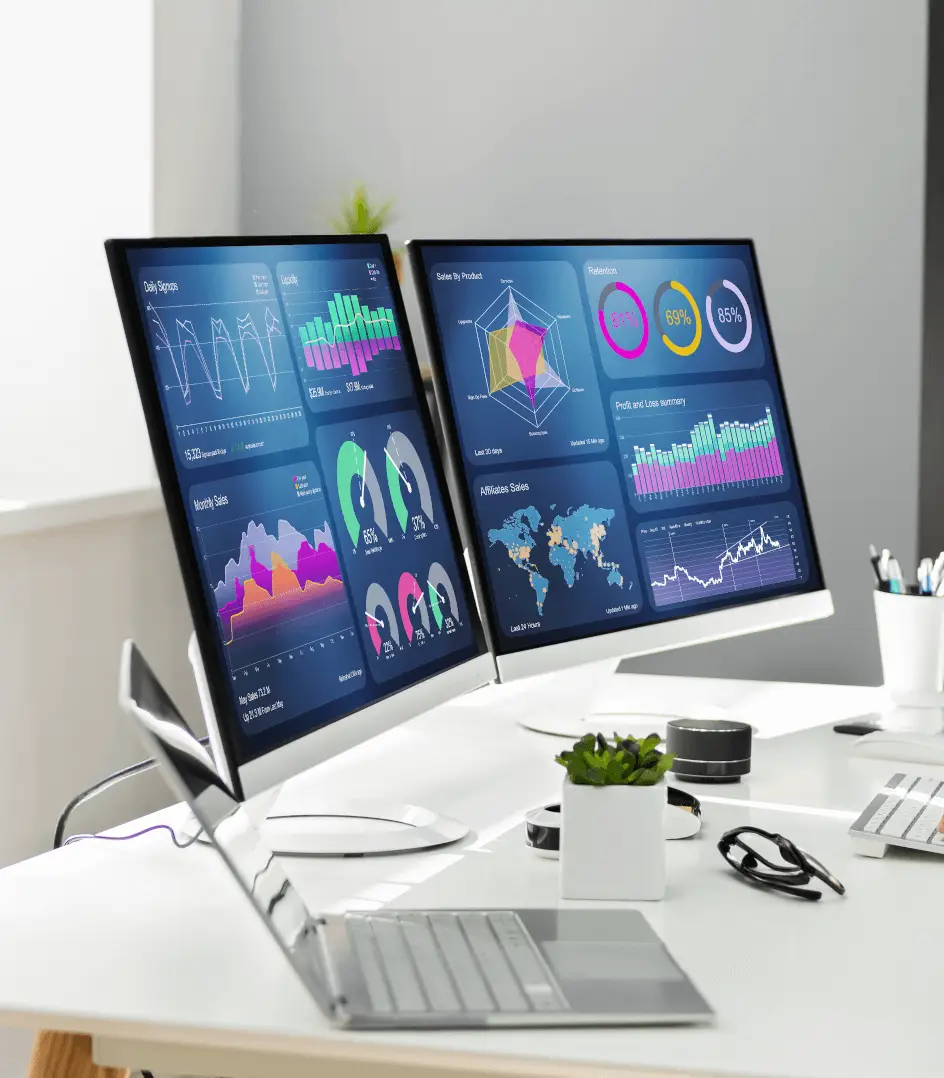

El Gobierno TI: la era de los datos
Hoy más que nunca, nos encontramos inmersos en una nueva era. La pandemia que estamos sufriendo ha otorgado aún más importancia, si cabe, a la Digitalización dando más relevancia al área de Tecnologías de la Información (TI), aunque a veces cueste ver su importancia dentro de una organización.
La innovación continua en TI es un vehículo que ofrece posibilidades de alcanzar una ventaja competitiva, facilitando y provocando la integración de diferentes entornos, que hasta ahora habían permanecido aislados entre sí:
- Entorno personal y empresarial: integrando entornos personales y profesionales, ampliando la conectividad por ubicuidad y movilidad. Por ejemplo, a través del trabajo en remoto 100% o modelos híbridos.
- Mundo físico y mundo digital: integrados a través de nuevos modelos híbridos, por ejemplo, la oferta de comercio electrónico con entrega y prueba en tienda física.
Recientemente, hemos sufrido un cambio de paradigma, la accesibilidad y tratamiento de la información. Este cambio de paradigma afecta tanto a las empresas como a las personas y, en ocasiones, impulsado por factores externos como la pandemia de COVID-19, está provocando un cambio disruptivo en la forma de trabajo, que requerirá un proceso de adaptación tanto a nivel material como cultural.
La información, un activo indispensable para la elaboración de estrategias empresariales por parte de los órganos de Gobierno Corporativo
Por otro lado, la evolución constante de la tecnología, el aumento de la capacidad de procesamiento de la información y un continuo cambio en la forma de extraer y analizar la información, han provocado que la información sea un activo indispensable para la elaboración de estrategias empresariales por parte de los órganos de Gobierno Corporativo. Podemos decir que nos encontramos en la “Era de los datos”, por lo que el Gobierno TI cobra una vital importancia, asegurando que los procesos de negocio y los de la tecnología de la información y comunicación trabajen en conjunto.
Gobierno Corporativo y Gobierno TI
El Gobierno Corporativo es el sistema por el cual las sociedades y las empresas se gestionan, administran y controlan con respecto a las relaciones profesionales entre los accionistas, el Consejo de Administración, la Dirección y las auditorías independientes, para aumentar el valor de la compañía, facilitar el acceso al capital y garantizar la longevidad de la empresa.
Como indicábamos anteriormente, en el escenario actual tendente a una mayor Digitalización y explotación de la información, el Gobierno TI es una parte integral y un gran aliado del gobierno corporativo, con un papel destacado en el desarrollo de estrategias y la definición de los objetivos de las organizaciones.
Se trata de una combinación estructurada de un conjunto de modelos de gestión, responsabilidades, habilidades y capacidades que es compartida y asumida dentro de las empresas por los ejecutivos, gerentes, técnicos y usuarios TI. Estos tienen el objetivo de controlar eficazmente los procesos, garantizar la seguridad de la información, optimizar el uso de recursos y dar apoyo para la toma de decisiones de manera alineada con la visión, misión y objetivos estratégicos de la organización.
Pero, ¿Cómo el Gobierno TI puede contribuir a la materialización de los beneficios del Negocio? En la respuesta a esta pregunta, debemos considerar los siguientes aspectos:
- Alineamiento estratégico: el gobierno TI asegura que tanto los procesos de negocio como los de tecnología de la información trabajen en conjunto.
- Entrega de valor: beneficio clave del gobierno TI, asegurando que el sector de la tecnología de la información sea tan eficiente y eficaz como sea posible.
- Gestión de riesgos: el gobierno TI permite que la empresa visualice y conozca ampliamente los posibles riesgos para el negocio y proporcione formas de minimizarlos.
- Gestión de capacidad: en este caso, el papel del gobierno TI es asegurar que la gestión de los recursos humanos y tecnológicos de la empresa sea lo más optimizada posible.
- Medición del desempeño: mediante el uso de indicadores (que van mucho más allá de los criterios financieros, por ejemplo, la medición de servicios IT), el Gobierno TI asegura la medición y la evaluación de los objetivos de negocio.
Diseño e implementación del Gobierno TI de la empresa
Desde Izertis contamos con la experiencia para apoyar a nuestros clientes en la implantación de modelos de Gobierno TI. Apoyándonos en el marco COBIT, en Izertis, hemos desarrollado una metodología de diseño e implementación de Oficinas de Gobierno TI que ayudan a obtener el valor óptimo de los recursos TI manteniendo un balance entre la obtención de beneficios, la utilización de recursos y los niveles de riesgo asumidos.
Según nuestra experiencia en implantación de estos modelos, destacamos 4 aspectos clave en el diseño de gobierno:
Asimismo, en Izertis establecemos un roadmap de implantación de la oficina de Gobierno en 7 fases, resumidas en la siguiente figura:
En dicho modelo de implantación, cobran especial relevancia las dos últimas fases del mismo que permiten evaluar la consecución de los objetivos planteados inicialmente, y la identificación de nuevos requerimientos, cerrando un ciclo que fomenta la mejora continua y garantiza la evolución de la Oficina. De esta manera:
- Durante la fase 6 – Obtener beneficios, se evalúa si se han logrado los objetivos definidos previamente. Se centra tanto en la transición escalable de las prácticas de gobierno y gestión como en la monitorización de las mejoras utilizando métricas de desempeño y los beneficios esperados.
- En la fase 7 – Revisar la efectividad, se identifican otros requerimientos de Gobierno y gestión, y se refuerza la necesidad de una mejora continua. Además, se priorizan las oportunidades para mejorar el modelo de gobierno.
En Izertis llevamos años promoviendo los beneficios del buen Gobierno TI, ya que, a través del apoyo de dicho Gobierno al Gobierno Corporativo, podemos evolucionar cualquier organización para convertirla en dinámica y adaptable a un entorno cada vez más cambiante, imbuyendo una constante necesidad de mejora en su cultura, para una mejor definición y consecución de sus objetivos y estrategias.
Artículo coescrito por Virginia Pérez y Antonio Luque.
